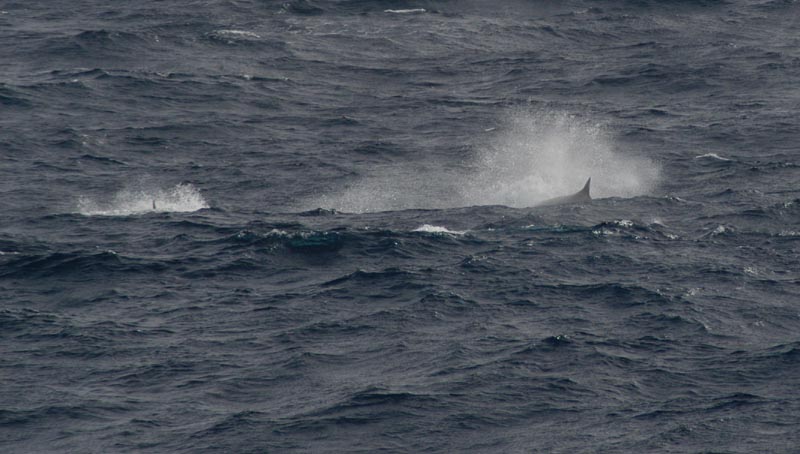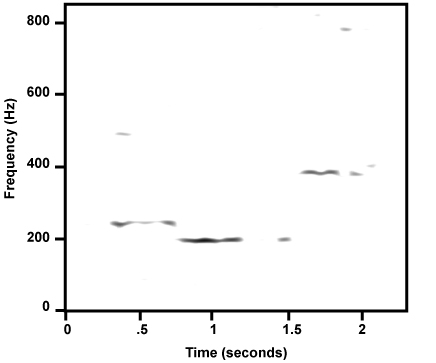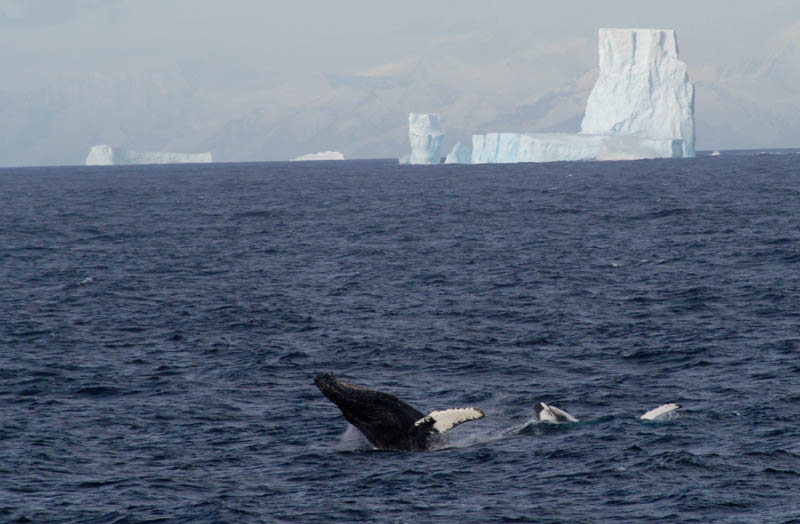IWC SO GLOBEC COLLABORATION
US SO GLOBEC CRUISE LMG 03-02 MOORING CRUISE
12 February -
Report 1 dated 25
February
The L.M. Gould departed
During
marine mammal survey time we will explore the ice edge and other parts of the
study area where concentrations of whales have occurred during the two years of
SO GLOBEC summer/autumn/winter sampling. The priority areas are: the ice edge; Matha Strait/Crystal Sound; Laubeuf Fjord; other fjords
behind
While retrieving ARP S2 (which we chased as the Antarctic Circumpolar Current carried it away from us at high speed!) we found sei whales. At least three separate groups could be seen in the area all surface active (we observed side lunge feeding at the surface). A sonobuoy was deployed to collect any calls this usually quiet species might make. At the same time, visual observations and photographic data were collected (pic 1. sei whale). The sei whales were surprisingly vocal, and high quality recordings were made of a variety of calls (pic 2. sei whale sonogram).


Humpback
song was recorded on the 21st in
During the late afternoon of Saturday 22nd Feb, as we steamed around the edge of the shoals surrounding Faure Islands on the way to ARP S9 we encountered a group of three socialising humpbacks. The adult and two juveniles had been sighted some miles previously - breaching and active at the surface. The two younger animals continued to breach, often together as the ship steamed slowly by (pic 3. breaching humpback). Then all three approached the ship to within 20 m, coming close enough for everyone on board to watch.

ARP S9 was retrieved and examined for whale calls. Initial analysis of the recordings reveal a seasonally distinct pattern of humpback (spring summer autumn) and minke (autumn winter) whales presence linked to the expansion and retreat of sea ice cover.
Monday
24th February was spent surveying the ice edge and marginal ice edge zone
(MIEZ) in the far south of
Today we will spend the day dragging for a WHOI mooring in the northern end of Marguerite Bay and then head to the Laubeuf Fjord, Tickle Pass and Matha Strait to investigate the other areas where densities of whales were high in previous summer, autumn and winter cruises.